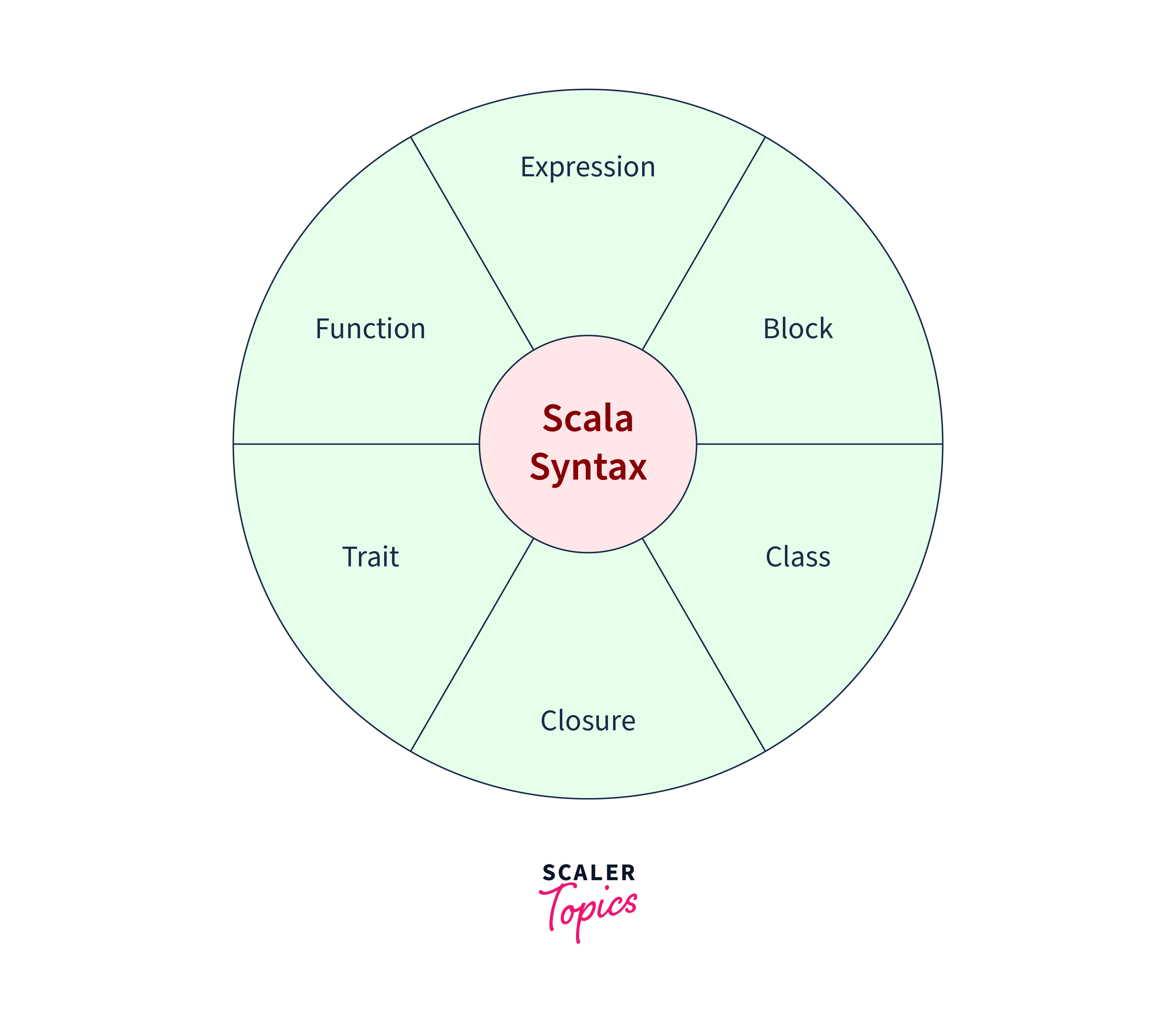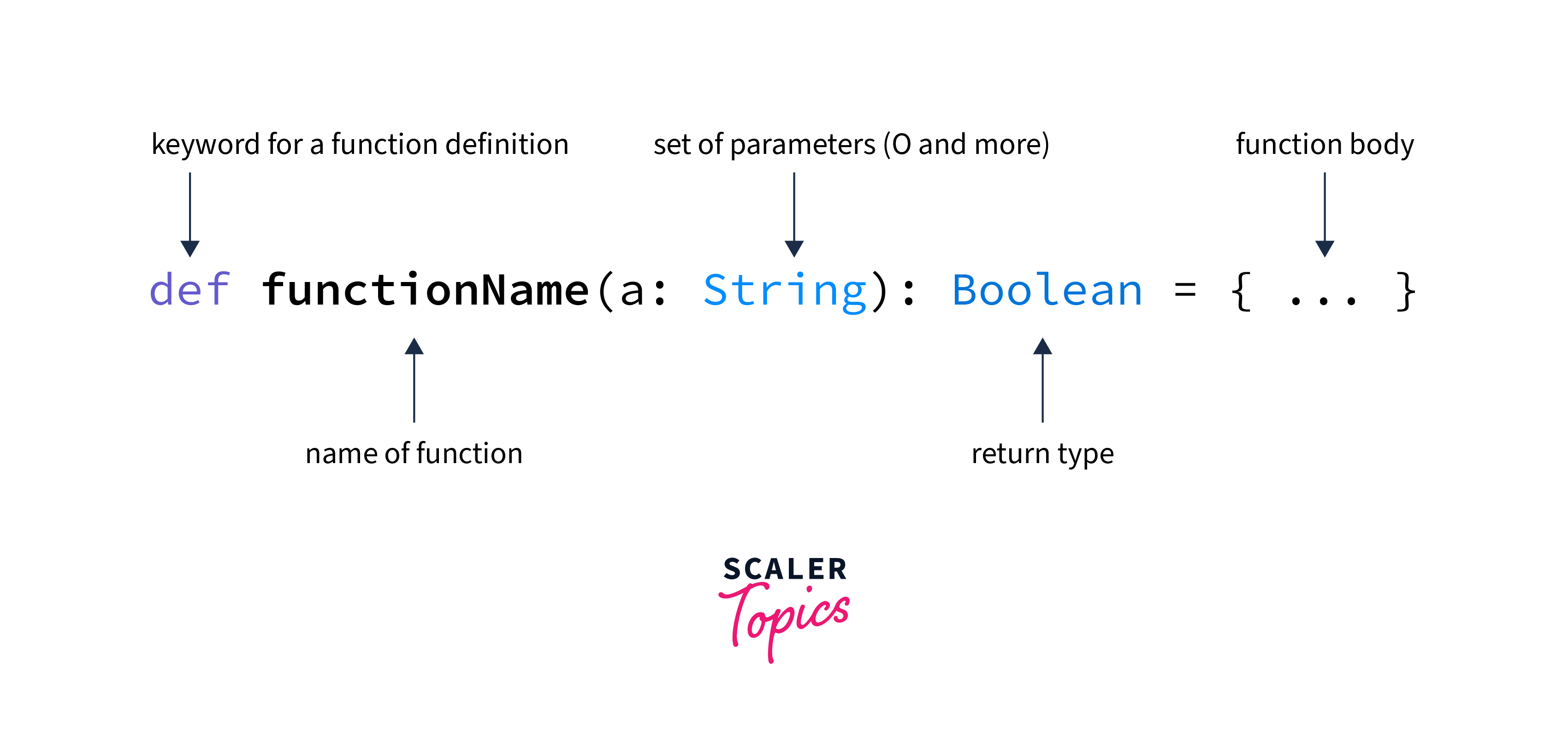Scala Syntax
Overview
Scala, often dubbed as "scalable language," is a powerful and expressive programming language that merges functional and object-oriented paradigms. Its syntax can be initially intimidating to newcomers, but it's also one of its most compelling features. Scala's syntax is designed to be concise, expressive, and highly readable, allowing developers to write clean and maintainable code.
What is Scala Syntax?
Syntax in Scala refers to the set of rules and conventions that dictate the structure and organization of statements or expressions within the programming language. This versatile language blends functional and OOP paradigms, offering a concise, expressive, and readable syntax for defining variables, data types, functions, control structures, classes, and more.
By adhering to Scala's syntax, we can write clean and maintainable code that takes full advantage of the language's capabilities, making it suitable for a wide range of application domains, including web development, data analysis, and concurrent programming.
Some basic syntaxes in Scala

Scala Expression
In Scala, expressions are constructs that yield values when evaluated. They can be simple, like arithmetic calculations, or complex, involving method calls and conditional logic. Scala's syntax for expressions is designed to be concise and expressive.
Syntax:
- Expressions can be used in various contexts, such as variable assignments, function return values, and within control structures.
- Scala has a rich set of operators for arithmetic (+, -, *, /, %), comparison (==, !=, <, >, <=, >=), logical (&&, ||, !), and more.
Example:
Scala Block
In Scala, a block is a sequence of expressions enclosed within curly braces {}. Blocks are often used to group multiple expressions together and can be treated as a single expression, with the value of the block being the value of the last expression within it. Scala's syntax for blocks allows us to write complex logic concisely.
Syntax:
- A block is defined by enclosing one or more expressions within curly braces {}.
- The value of the block is the value of the last expression inside the block.
- We can use local variables within a block, and they are scoped to the block.
Example:
Scala Class
In Scala, a class is a blueprint for creating objects. It defines the structure and behavior of objects that can be created from it. Scala's class syntax is similar to that of other object-oriented programming languages, but it also includes some unique features.
Syntax:
- class: The class keyword is used to define a class in Scala.
- ClassName: Replace this with the name we want to give to our class.
- parameters: These are the parameters that can be passed to the primary constructor of the class.
- Fields: Fields are class variables that can be either mutable (var) or immutable (val). They store data that is associated with instances of the class.
- Constructor: The primary constructor of the class is defined within the class declaration itself. We can also define auxiliary constructors using the def this(...) syntax.
- Methods: Methods define the behavior of the class. They are functions that can take parameters and return values.
Example:
Scala Object
In Scala, an object is an exclusive, single-instance representation of a class. It is a way to create a single, globally accessible instance of a class, which is often used for holding utility methods or for creating singletons.
Syntax:
To define an object in Scala, we use the object keyword followed by the object's name. Unlike a class, an object cannot be instantiated with the new keyword because it is inherently a singleton.
Example:
Scala Function
In Scala, a function is a reusable block of code that can be called with arguments to perform a specific task. Functions are fundamental to Scala's functional programming paradigm and are defined using the def keyword. Scala's syntax for defining and using functions is concise and expressive.
Syntax:
To define a function in Scala, we use the def keyword followed by the function's name, a list of parameters enclosed in parentheses, a colon (:) specifying the return type, and an equals sign (=) followed by the function body enclosed in curly braces {}.

Example:
Scala Method
In Scala, a method is a function that is associated with an object or a class. Methods are an essential part of object-oriented programming in Scala, and they define the behavior and operations that objects can perform. Scala's syntax for defining and using methods is similar to that of functions.
Syntax:
To define a method in Scala, we typically define it within a class or an object. The syntax is similar to that of a function, with a few differences:
- def: The def keyword is used to declare a method.
- methodName: Replace this with the name we want to give to our method.
- parameter1, parameter2, etc.: These are the parameters that the method takes. Methods can have zero or more parameters.
- Type1, Type2, etc.: These are the types of the parameters.
- ReturnType: The return type of the method specifies the type of value that the method will return.
- Method body: This is where we define the logic and operations that the method performs.
Example:
Scala Trait
In Scala, a trait is a special kind of class that defines a set of abstract methods and fields that can be mixed into classes to provide additional functionality. Traits are similar to Java interfaces but allow for concrete implementations of methods.
Syntax:
To define a trait in Scala, we use the trait keyword followed by the trait's name and a set of method and field declarations:
- trait: The trait keyword is used to define a trait.
- MyTrait: Replace this with the name we want to give to our trait.
- method1, method2, etc.: These are abstract method declarations that any class mixing in the trait must provide concrete implementations for.
- parameter1, parameter2, etc.: These are parameters for the methods.
- Type1, Type2, etc.: These are the types of the parameters and return types.
- field1 and field2: These are abstract fields, and classes mixing in the trait must provide concrete implementations for them.
Example:
Main Method
In Scala, the main method is the entry point for a Scala application. It's where the execution of our program starts. The main method must be defined inside an object, and it should have a specific signature for it to serve as the entry point for our application.
Syntax:
- object MainObject: We define an object that serves as the entry point for our application. The name of the object can be anything we choose.
- def main(args: Array[String]): Unit : This is the definition of the main method. It must have this exact signature to serve as the entry point. The args parameter is an array of strings that can be used to pass command-line arguments to our application. The Unit return type means that the method does not return any value.
Example:
Field
In Scala, fields are variables declared within a class or an object that store data associated with instances of the class or the singleton object. Fields represent the state of objects and define their attributes. Scala provides two types of fields: val and var, which correspond to immutable and mutable variables, respectively.
Syntax:
To define fields in Scala, we declare them within a class or an object.
- class MyClass: This defines a class named MyClass within which we can declare fields.
- val fieldName: This declares an immutable field. The keyword val indicates that the field's value cannot be changed after it's initialized.
- var anotherField: This declares a mutable field. The keyword var indicates that the field's value can be changed after initialization.
- FieldType: This represents the type of data that the field can hold.
- initialValue: This is an optional part where we can specify an initial value for the field.
Example:
Closure
In Scala, a closure is a function that captures and retains references to variables from its containing lexical scope, even after that scope has exited. This allows the function to access and manipulate those variables even when it's called from a different scope. Closures are a fundamental concept in functional programming and are frequently used in Scala.
Syntax:
In Scala, closures are created when a function literal (also known as an anonymous function) references variables from its surrounding context. The basic syntax for creating a closure is as follows:
- (parameter1: Type1, parameter2: Type2, ...): This is the parameter list of the closure function. It can take one or more parameters.
- =>: The arrow operator separates the parameter list from the function body.
- { ... }: The curly braces enclose the function body, which may reference variables from the enclosing scope.
Example:
Conclusion
- Scala's concise and expressive syntax supports versatile, clean, and powerful code.
- Scala uses def for defining functions and methods, distinguishing standalone functions from object or class-associated methods.
- Scala's class and object syntax resembles other OOP languages, with classes defining structure and behavior and objects serving as singletons or method/field containers.
- Scala employs traits for code reuse, akin to Java interfaces but with potential concrete methods and fields, and supports functional programming through closures with a straightforward main method for entry points.
